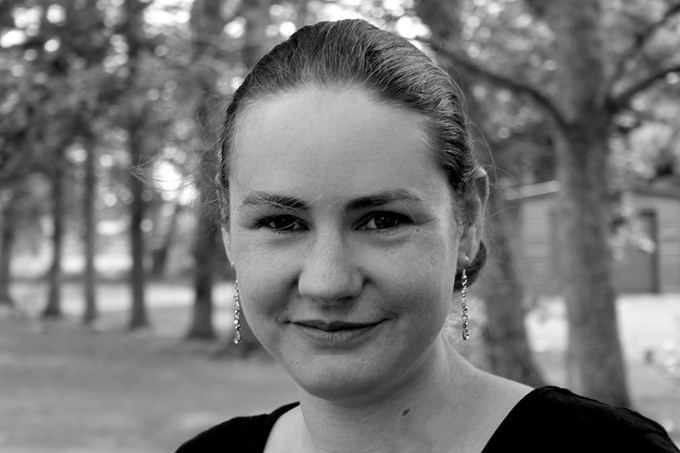OurAuckland sat down with Claire Wilson, Auckland Design Office’s Principal Specialist, to find out more about her new role, why universal design is important for Auckland and how Claire can implement universal design changes in this great city.
What does the term Universal Design mean?
In simple terms, it means to design things so that it’s easier and more enjoyable for everyone to use.
It is quite distinct from accessible design or barrier-free design, which is specifically about designing for disabled people. Often such designs are utilitarian, ugly and scream ‘design for disabled people” which indirectly promotes segregation.
Universal design is subtle, often unnoticeable, and serves a wide range of people of people with and without impairments.
Can you briefly describe what your job entails?
I champion universal design across the city, and implement the Auckland Design Office’s (ADO) universal design actions as identified in the Disability Operational Action Plan. I also write content for the Auckland Design Manual’s (ADM) Universal Design and Active Design hubs.
Much of my job involves supporting and working with the community to collect user experience information about how good design benefits them and how bad design hinders their everyday activities.
For example, we have the Universal Design Forum group which provides expert advice and feedback on ADM content and tools for the Universal Design Hub.
What drew you to working as a champion for Universal Design in Auckland?
I’ve always wanted to make a difference in terms of human rights, fairness and common sense. I want to educate Aucklanders and council staff so that people better understand that, while people may have temporary or permanent impairments for whatever reason, it is design that disables people, particularly poor urban design. In other words, people face barriers in their everyday lives because of bad or thoughtless design as well as social attitudes.
Who is Universal Design for?
For everyone. We all will experience impairments or limitations at some point in our lives for a variety of reasons. Additionally, everyone has experienced frustrations with the way things are designed even if we have no impairments, for example trying to push through heavy swing doors when our hands are full.
However, the following people or groups of people particularly benefit from universal design:
- Families with young children, such as getting a baby buggy up stairs or a father wanting to take his young daughter to the toilet.
- Tourists: finding signage that uses minimal or no English
- Disabled people: if you get it right for disabled people (with all sorts of impairments i.e. sensory, cognitive and physical), then you will get it right for most people
- Older adults: impairments increase with age
- People with chronic illness or temporary injury
- Ambulance officers: staff have suffered chronic injury trying to get people down safely in a stretcher from multi-level buildings – where lifts are too small to take a stretcher.
- Couriers or people handling trolley loads (step free entrances and curb cuts are very useful)
- Pregnant women
Why is a Universal Design approach important for Auckland now?
- We are aiming to be the world’s most liveable city and a high quality international city. There are a large number of people for whom Auckland isn’t liveable in terms of being able to get around and use our urban environment. This means that some people cannot get to work in some instances or enjoy the local playground.
- An international city needs to have well designed facilities and infrastructure that attracts people to visit, work, and live in the city. If a city is designed to be safe, accessible and enjoyable for everyone, then a wider range of people will come to Auckland.
- Accessible tourism is almost non-existent in New Zealand compared to other countries. If we were to make our city more attractive to tourists, this would inject money into our economy. Note that Auckland receives a large number of cruise ships – many of these tourists are over 55 with an impairment of some sort.
- Cultural diversity: Auckland is one of the most diverse cities in the world which means a variety of different languages are used every day. Not everyone is fluent in English. Simple way-finding signage makes it easier and safer for people to know where to go.
- Universal design is a holistic concept and it links in with other design and social concepts such as sustainability, design for health and wellbeing, injury and crime prevention design, ageing in place, social justice, socially sustainable communities etc.
Will it be expensive to apply a Universal Design approach to projects?
If it is incorporated in at the earliest stage possible, such as the design brief, the cost is almost negligible. It’s certainly significantly cheaper than fixing up a mistake or retrofitting. Get it right the first time.
It may mean prioritising aesthetically pleasing universal design features over other design features that exist for purely aesthetic reasons with no other functional purpose. Wouldn’t it make more sense to invest in attractive features that have a functional purpose and allow access for as many people as possible?
Who should I talk to get more information/How do I get more info?
When the new content on the Universal Design hub is available that will be your first port of call. In the meantime, you can contact myself: (email) or the following organisations:
Be Accessible: a social change organisation that aims to change attitudes and work with business to be more responsive to the needs of access customers. They also provide auditing services and information around accessibility.
Lifemark: Specific to the residential sector, Lifemark is the only organisation that provides standards for accessible housing. Lifemark rates your new home design against standards based on Universal Design Principles. The standards help to assess how adaptable, safe and usable the home is for your family as they grow through different life stages.


